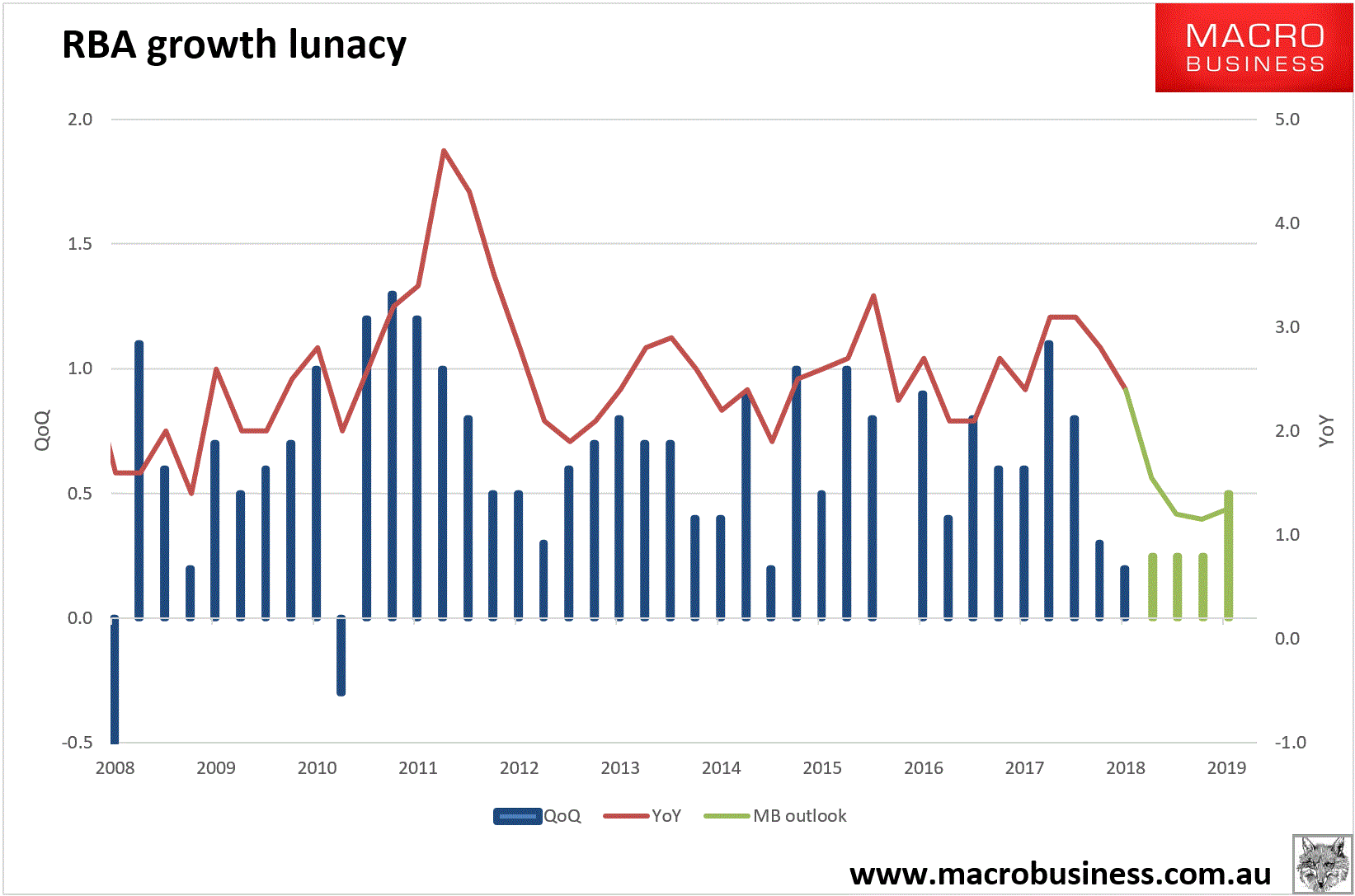Via Bill Evans at Westpac:
The Reserve Bank Board decided to leave the cash rate unchanged at 1.50%.
This was Westpac’s forecast, although markets were uncertain, with around a 50% probability priced in for a rate cut and 14/26 market economists forecasting a cut (Bloomberg survey 3 May).There are two main reasons behind this decision. Firstly, the RBA’s response to the recent March quarter inflation report was not as negative as had been expected. In its preview, Westpac pointed out that the RBA had moved from forecasting underlying inflation as the average of the weighted median and the trimmed mean to forecasting just the trimmed mean.
In the March inflation report, the trimmed mean printed an increase of 0.3% for the quarter, compared to the RBA’s likely forecast of 0.4% – only a 0.1ppt miss. Today, the RBA lowered its trimmed mean forecast for 2019 from 2 per cent to 1 ¾ per cent, and for 2020 from 2 ¼ per cent to 2 per cent. That is only a ¼ ppt reduction in the forecast. As we pointed out in our preview, that reduction compares to a 1 ppt reduction in the forecast from 2 ½ per cent to 1 ½ per cent in May 2016 (in response to a similarly low inflation report for the March quarter). Governor Stevens cut rates in response to that forecast change at the May 2016 Board meeting.
The second issue of importance was the Board’s noting in the April meeting minutes that “members also discussed the scenario where inflation did not move any higher and unemployment trended up, noting that a decrease in the cash rate would likely be appropriate in these circumstances”.
Today’s Governor’s Statement strongly emphasised the importance of the labour market, “it [the Board] recognised that there was still spare capacity in the economy and a further improvement in the labour market was likely to be needed for inflation to be consistent with the target. Given this assessment, the Board will be paying close attention to developments in the labour market at its upcoming meetings”. As this comment emphasises, the second condition nominated in the April minutes is yet to be fulfilled. It is also important from a timing perspective to note the term “upcoming meetings”. That suggests to us that a common view held by some economists of a move in June can be ruled out. This condition around the labour market will need more than one employment report to establish a trend.
We feel that this statement fits well with our view that the next move will be a cut in August. Firstly, we expect that the June quarter inflation report will print trimmed mean growth of around 0.4%. With the first six months of the year contributing 0.7ppts to the annual rate for 2019, it is unlikely it will be possible to persist with the 1 ¾ per cent( 2019) – 2 per cent( 2020) scenario and a 1 ½ per cent( 2019) – 1 ¾ per cent( 2020)scenario will be adopted by the RBA for its August meeting. Recognition that inflation will hold below the bottom of the 2-3 per cent target band for 2019 and 2020 will signal the need for further policy easing.
We also expect that developments in the labour market over the next three months will disappoint the RBA. It is not entirely clear whether they will be satisfied with a stable 5 per cent unemployment rate which the Governor notes is their forecast for the next year, or they require a sustained lower unemployment rate, as noted in the concluding paragraph stating that a further improvement in the labour market is needed. Either way Westpac expects to see a deterioration in the labour market over the next 6 months.
We expect that this sequence of weak inflation and softening labour market data will persist throughout 2019, which is consistent with our growth forecast of 2.2% compared to trend of 2 ¾ per cent. That profile remains consistent with the need for further stimulus at the November meeting following the August cut
Supporting our outlook for the labour market is our research showing that the cyclical sectors of the economy are already in jobs decline although this is being supported by ongoing jobs growth in the non- cyclical sectors.
Conclusion
Westpac forecast that rates would remain steady at today’s meeting.
However we anticipate that developments around domestic demand; the labour market; and underlying inflation will establish a clear case for cuts in both August and November.
This view has been held since February 21.
Westpac’s growth outlook is too high as well now. If the RBA hold off that long we can expect growth closer to 1%:

Should have put the boot in harder, Bill.

